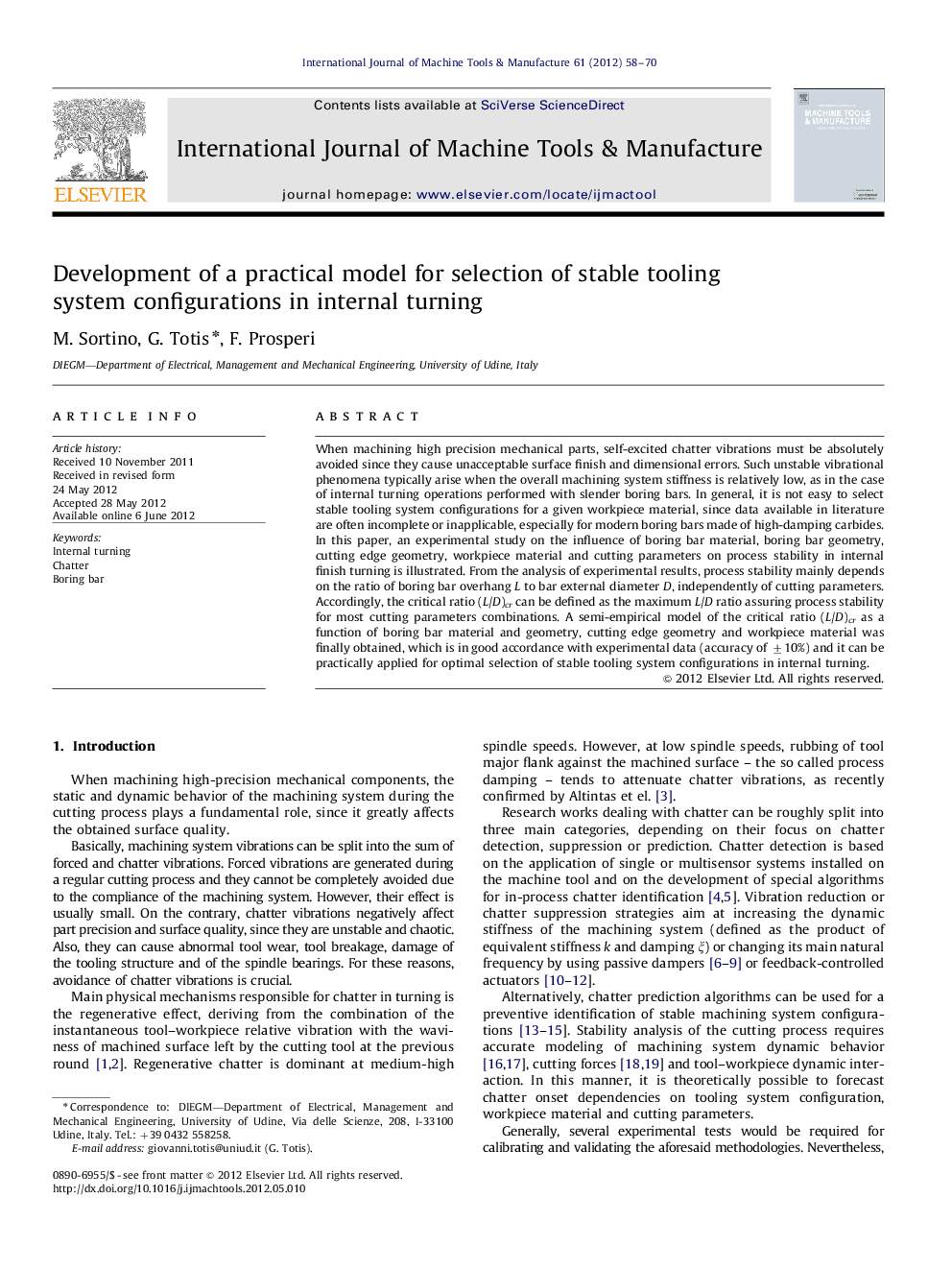| Article ID | Journal | Published Year | Pages | File Type |
|---|---|---|---|---|
| 781853 | International Journal of Machine Tools and Manufacture | 2012 | 13 Pages |
When machining high precision mechanical parts, self-excited chatter vibrations must be absolutely avoided since they cause unacceptable surface finish and dimensional errors. Such unstable vibrational phenomena typically arise when the overall machining system stiffness is relatively low, as in the case of internal turning operations performed with slender boring bars. In general, it is not easy to select stable tooling system configurations for a given workpiece material, since data available in literature are often incomplete or inapplicable, especially for modern boring bars made of high-damping carbides. In this paper, an experimental study on the influence of boring bar material, boring bar geometry, cutting edge geometry, workpiece material and cutting parameters on process stability in internal finish turning is illustrated. From the analysis of experimental results, process stability mainly depends on the ratio of boring bar overhang L to bar external diameter D, independently of cutting parameters. Accordingly, the critical ratio (L/D)cr can be defined as the maximum L/D ratio assuring process stability for most cutting parameters combinations. A semi-empirical model of the critical ratio (L/D)cr as a function of boring bar material and geometry, cutting edge geometry and workpiece material was finally obtained, which is in good accordance with experimental data (accuracy of ±10%) and it can be practically applied for optimal selection of stable tooling system configurations in internal turning.
► Experimental study on max. stable boring bar aspect ratio L/D in internal turning. ► Different bar materials and geometries, workpiece materials and tools are tested. ► Modal analysis is carried out on the considered tooling system configurations. ► A model based on chatter theory is calibrated by means of experimental data.
